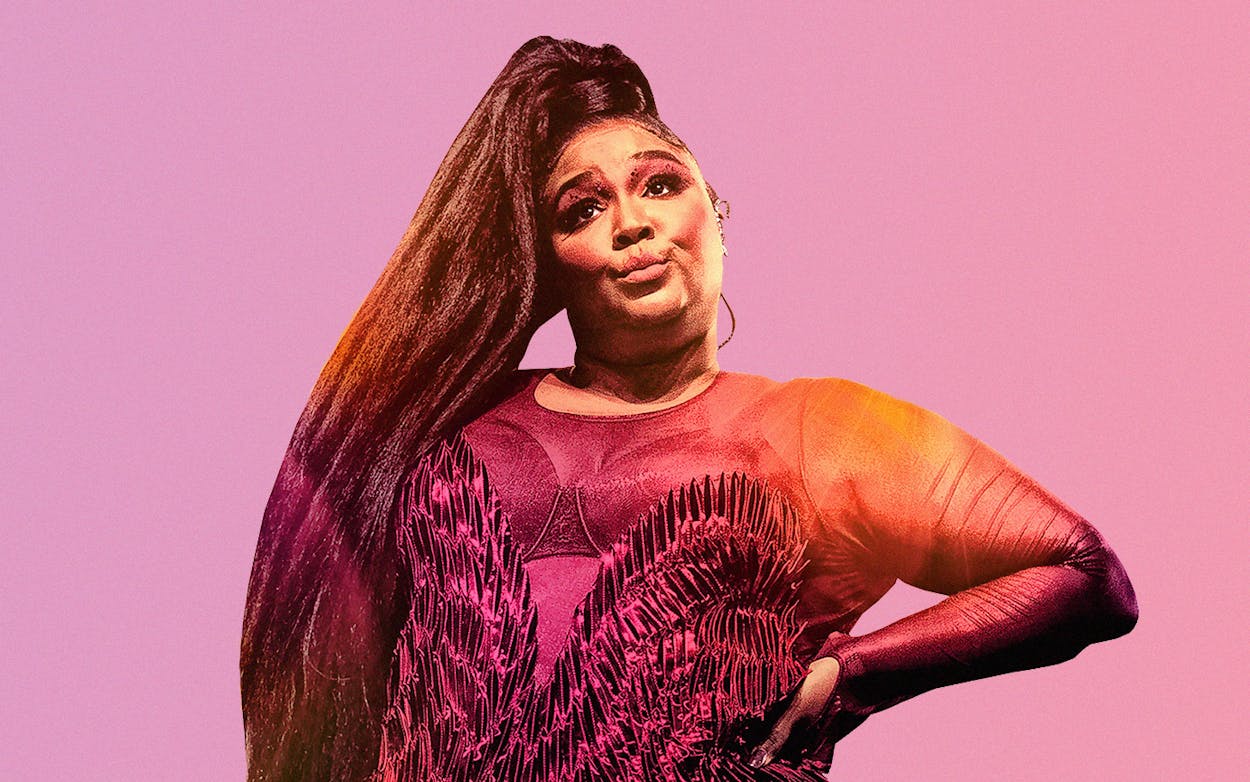In 2014 musical phenomenon Lizzo played to “a large tent with ten people in it” at the United Kingdom’s Glastonbury Festival. As recently as 2018, the singer, rapper, and flutist was opening for acts such as Florence and the Machine. But by 2019, the former Houstonian was drawing thousands of fans to her festival sets and becoming one of the world’s most visible pop stars. At this year’s Grammy Awards, airing January 26, she’ll be up for eight honors—more than any other act—including Best New Artist and Album of the Year, for Cuz I Love You. Things may have moved quickly for Lizzo last year, but her success has been hard-won. To understand how she became a superstar, we’ve compiled a numerical breakdown of her incredible achievements.
304,000
Number of followers of the Instagram fan account for Lizzo’s flute (named Sasha Flute, after Beyoncé’s alter ego, Sasha Fierce).
$33.2 million
Opening weekend box office earnings for Hustlers, in which Lizzo made her film debut.
6
Place that her bouncy single “Juice” held on Barack Obama’s 2019 summer playlist.
616 million
Number of Spotify listeners who streamed Lizzo in 2019.
400
Maximum capacity of Austin’s now-defunct Bat Bar, where Lizzo performed a show during SXSW in 2017.
3
Years Lizzo lived in Houston. (She moved there with her family from Detroit in 1998, when she was ten, and moved away in 2010.)
1,378,527
Number of views a 2010 YouTube video has accrued of Lizzo, bored and snowed in, covering Jay-Z and Alicia Keys’s “Empire State of Mind” on the flute.
60,000
Estimated number of attendees at Lizzo’s first of two weekend sets at the Austin City Limits Music Festival in 2019.
7
Number of weeks the single “Truth Hurts” stayed at number one on the Billboard Top 100, surpassing Cardi B’s “Bodak Yellow” as the longest-running number one rap single by a solo female artist in the chart’s history.
This article originally appeared in the February 2020 issue of Texas Monthly with the headline “Lizzo’s Rise to Stardom.” Subscribe today.
- More About:
- Music
- Austin City Limits
- Lizzo
- Houston









